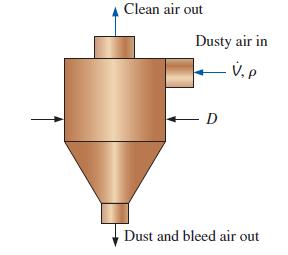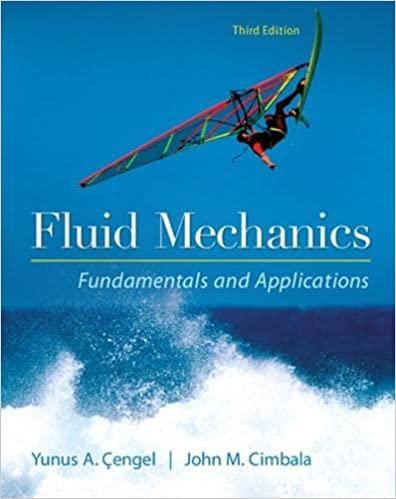A common device used in various applications to clean particle-laden air is the reverse-flow cyclone (Fig. P7120).
Question:
A common device used in various applications to clean particle-laden air is the reverse-flow cyclone (Fig. P7–120). Dusty air (volume flow rate V̇ and density ρ) enters tangentially through an opening in the side of the cyclone and swirls around in the tank. Dust particles are flung outward and fall out the bottom, while clean air is drawn out the top. The reverse-flow cyclones being studied are all geometrically similar; hence, diameter D represents the only length scale required to fully specify the entire cyclone geometry. Engineers are concerned about the pressure drop δP through the cyclone.
(a) Generate a dimensionless relationship between the pressure drop through the cyclone and the given parameters. Show all your work.
(b) If the cyclone size is doubled, all else being equal, by what factor will the pressure drop change?
(c) If the volume flow rate is doubled, all else being equal, by what factor will the pressure drop change?
FIGURE P7–120

Step by Step Answer:

Fluid Mechanics Fundamentals And Applications
ISBN: 9780073380322
3rd Edition
Authors: Yunus Cengel, John Cimbala





